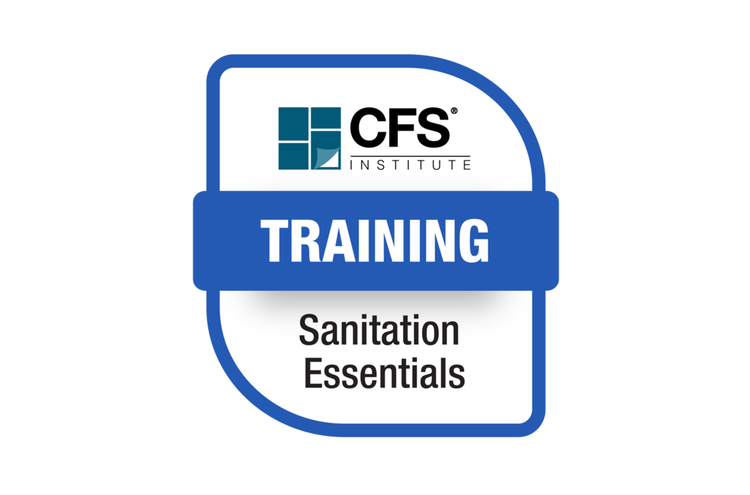Sanitation Paramount in Age of FSMA

In the Age of FSMA (the Food and Drug Administration’s Food Safety Modernization Act), in-store delis, bakeries and prepared foods departments and their suppliers know that if they don’t keep their facilities clean and pathogen-free, the consequences will be severe.
Fortunately, there are sanitation specialists whose job is to help make sure those hypothetical scenarios never become reality.
That job, however, is often far from easy. Jake Watts, vice president of food safety at Cuba City, Wisconsin-based Packers Sanitation Services Inc. (PSSI), says labor and training are always big problems when it comes to proper sanitation practices.
“When turnover is high, it makes it difficult to properly train employees and establish consistent effective processes,” he says. “Depending on the nature of the business, there are also a variety of variables that need to be considered for proper sanitation, such as the type of food being processed or prepared, equipment, environment, and specific cleaning tools needed.”
And while the same basic sanitation principles may apply from case to case, Watts says, the chemistry and methodologies may be much different and should be tailored for each specific operation.
“We are happy to see that the industry is gravitating toward improving sanitation programs, training and hygienic design."
Retaining workers who do sanitation-related tasks and getting them the proper training is also a perennial problem for the baked-goods manufacturing clients of Commercial Food Sanitation, says Anthony Saitta, a food safety specialist with the company.
“For one, sanitation is a difficult job,” he says. “It’s hard to keep employees to do those jobs when they can go down the street, make $2 more per hour and not have to work as hard.”
On top of that, too often workers with sanitation tasks aren’t getting the training they need, Saitta says. “It requires hands-on experience, time and coaching,” he says. When Commercial Food Sanitation trainers instruct their clients in their Seven Steps of Sanitation, they find that not only are they not performing crucial tasks, but that they don’t even have a step-by-step protocol in place, Saitta says.
“If you can’t see it, you can’t clean it and you can’t inspect it."
In addition to personnel-related issues, equipment plays a huge role in whether baked goods suppliers are making the grade when it comes to sanitation, Saitta says. A lot of equipment used today in the bakery industry is what Commercial Food Sanitation calls “legacy” equipment. That’s basically a nice way of saying equipment that’s been in use for a half-century — or longer.
With legacy equipment, “there’s not a lot of hygienic design, which has really moved to the forefront” in bakery and food production in general, Saitta says. A hygienically-designed piece of equipment, he says, is easier to clean and contains far fewer hidden areas that can escape detection. “If you can’t see it, you can’t clean it and you can’t inspect it,” Saitta says. Those hidden places are where food or other materials can hide and, over time, collect moisture and potentially produce pathogens.
For many companies, replacing their legacy equipment is a non-starter, Saitta says. But most clients that Commercial Food Sanitation works with are at least open to replacing a part or parts of a particular piece of equipment in order to reduce those hidden pockets that can harbor potentially troublesome materials.
Overcoming misconceptions about bakeries’ ability to harbor pathogens can be a tall task, Saitta says. The whole idea of the baking process, after all, is to remove moisture from foods.
But in too many bakery production facilities, he says, raw foods aren’t kept separate from finished ones, raising the risk of contamination. In facilities being designed today, spaces are divided to keep raw and finished separated. Raw flour can be full of pathogens, including Listeria and Salmonella, Saitta says, and flour has the tendency to float through the air and settle on other things.
Prepared foods’ popularity creates new challenges
Prepared foods in grocery in-store departments are more popular than ever, says April Zeman-Lowe, national account manager for Penn Valley, California-based Best Sanitizers Inc. And when workers in those departments handle and prepare ready-to-eat foods, the risk of cross-contamination increases.

“More than ever, grocery stores should be educating and training their employees, especially those in the deli, bakery or produce departments, on the importance of personal hygiene and food safety,” Zeman-Lowe says.
Glove juice is the bacteria-rich moisture that can form inside rubber work gloves when proper hand hygiene procedures aren’t followed.
In in-store deli and bakery settings, Best Sanitizers’ products help prevent the dreaded “glove juice,” she says. “In many grocery delis, bakery and other prepared food departments, food workers wear gloves when handling ready-to-eat foods. Gloves are worn to help protect consumers from food contamination, but they can also help spread germs because they can produce glove juice.’”
Glove juice is the bacteria-rich moisture that can form inside rubber work gloves when proper hand hygiene procedures aren’t followed. Encased in rubber gloves, hands can get warm and sweaty, creating the ideal environment for bacteria to multiply.
And if those gloves are torn or nicked while working, the contaminated glove juice can leak onto equipment, surfaces, and potentially even food. Or, if the glove is removed and the worker touches food or equipment without properly washing their hands first, that same bacteria-laden moisture can immediately transfer contaminants from their hands to whatever they touch.
And as busy as most grocery deli, bakery or prepared food departments get, Zeman-Lowe says, it can be hard to find the time to properly clean and sanitize deli slicers, cutting boards, utensils and counter tops and other equipment. When cleaning and sanitization products are not easily accessible, the step may be skipped to save time and help the customer.
It’s in the above scenarios, Zeman-Lowe says, where Best Sanitizers products can make the crucial difference between a safe and unsafe working environment. “We help food handlers reduce glove juice by offering quality hand soaps and hand sanitizers that effectively reduce the number of pathogens on the hands,” she says. “In addition, Best Sanitizers educates customers on how to implement proper hand hygiene techniques before and after donning gloves. Washing and then sanitizing hands before gloving lowers the number of colony forming units (CFUs) on hands, greatly reducing the risk of these CFUs multiplying into dangerous numbers.”
To successfully reduce the number of CFU’s, the first step is to wash hands with a quality hand soap, such as Alpet Q E2 Sanitizing Foam Soap, for 20 seconds, Zeman-Lowe says. But hand washing is just a start. For maximum pathogen reduction, she says, hand washing must be followed by hand sanitization.
“Sanitizing with a quality hand sanitizer, such as Alpet E3 Plus Hand Sanitizer Spray, after hand-washing will further reduce the colony forming units (CFUs), making it more difficult for the bacteria to recolonize and grow into a potential threat,” Zeman-Lowe says.
Regulations raise the bar
The increase in regulatory requirements, Watts says, has raised the bar for everyone in the food processing and preparation business. “A lot of facilities realized their programs were lacking and have either had to hire extra staff to manage or work together with professional sanitation service companies like PSSI to help ensure compliance.”
FSMA, signed into law by President Obama in 2011, has had a significant impact on the industry as a whole, Watts says.
“A new level of regulatory rules and regulations across the food supply chain has challenged the industry to re-evaluate its business and processes as it relates specifically to sanitation and food safety,” he says. “There’s a higher level of internal and external environmental and finished product sampling going on to test for any traces of contamination that could cause food related illnesses.”
“It’s fantastic, we are happy to see that the industry is gravitating toward improving sanitation programs, training and hygienic design. Companies are paying a lot more attention to sanitation.”
More recently, in June, President Trump proposed the creation of a single federal food safety agency under the U.S. Department of Agriculture that would also significantly impact businesses as well, Watts says. “Whatever happens with this potential legislative change, one thing is for sure and that is the rules and regulations around food safety are not going to let up anytime soon,” he says. “They are only going to become stricter and more complicated for businesses to manage.”
That’s where companies like PSSI can play such a vital role for in-store grocery, central kitchen, commissary and other clients in the food industry, he says. PSSI, Watts says, takes the stress out of compliance and trying to keep up with all the latest rules and regulations, enabling its clients to focus on the production and quality of their products.
“PSSI has a team dedicated to following all the latest legislative changes and other industry regulations that guide its business and approach in developing and executing sanitation programs that ensure the highest level of compliance,” he says. “Overall, PSSI is dedicated to helping protect its clients’ brands and the safety of its consumers.”
Saitta agrees that the passage of FSMA was a game changer for the industry, and companies have done a good job of getting up to speed. “It’s fantastic, we are happy to see that the industry is gravitating toward improving sanitation programs, training and hygienic design,” he says. “Companies are paying a lot more attention to sanitation.”



